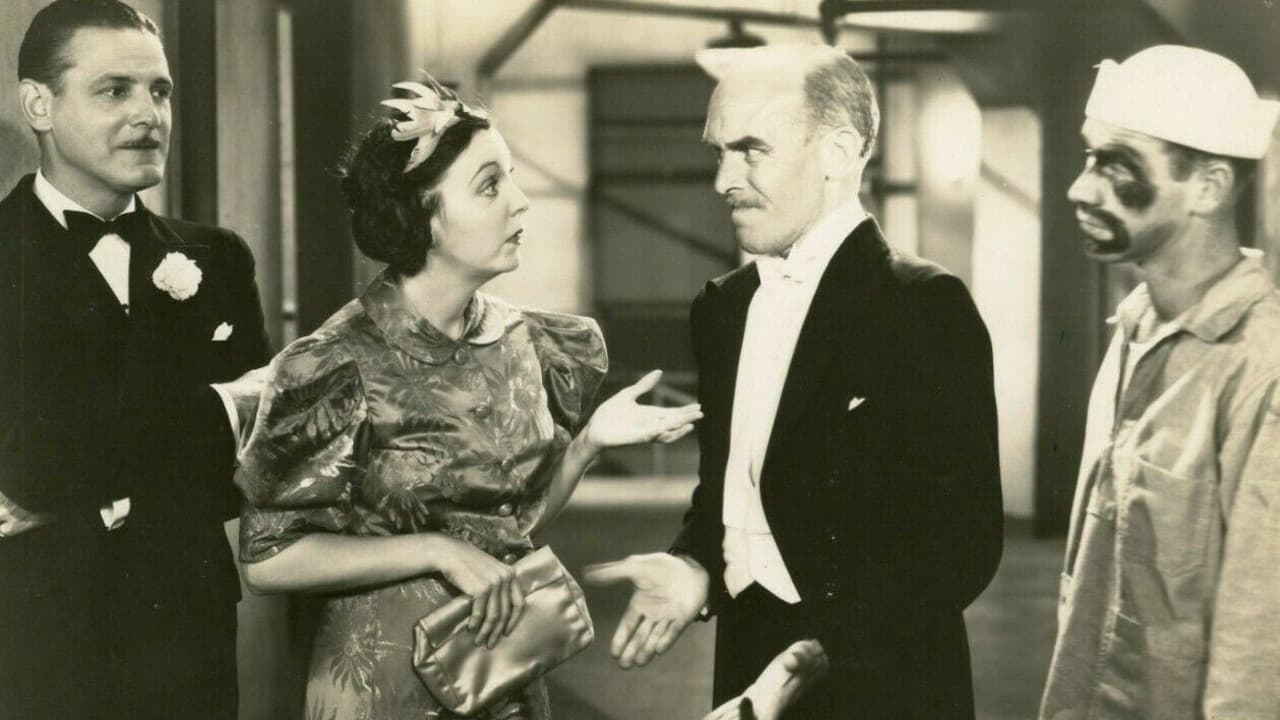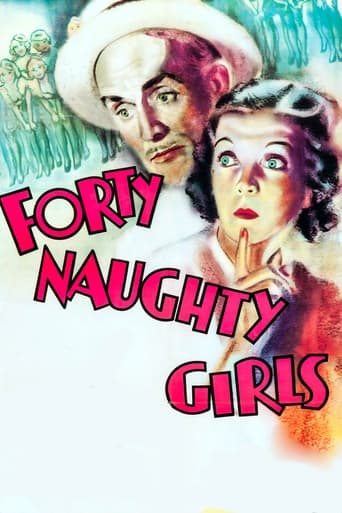

Forty Naughty Girls (1937) * (out of 4) The sixth and final film in the RKO series has Zasu Pitts returning for her second stint as Hildegarde Withers and of course James Gleason is back as Inspector Piper. This time out Withers and Piper are attending a popular play on Broadway when the press agent is shot dead. The two begin the investigation and learn that he was trying to mess with an actress (Marjorie Lord), which didn't sit well with her boyfriend but there are a few others with a motive to kill the man. FORTY NAUGHTY GIRLS has a horrible reputation and it even managed to get a rare BOMB rating from Leonard Maltin who rarely goes that low on older movies. After viewing the film I don't think it's that bad but at the same time this thing is still a complete disaster that has very little going for it. I think a lot of the blame can be pointed at RKO taking this "B" series and dropping it down to a "D" level. The screenplay, the look of the film and the overall production values are a lot lower than what was seen in earlier movies and I'm going to guess that someone needed to finish off a contract and this film was thrown together to do just that. The screenplay is just a boring mess with one suspect entering the picture every few minutes but the problem is that there's nothing here to make you care who the killer is. I'll admit that something would happen, I'd grow bored and then ten minutes later I couldn't remember what had just happened. Another problem is the performance of Pitts. There's no question she was a talented actress but her talents weren't going to be needed in every type of film and it's clear the producers didn't know how to use her here. As Withers she's not playing a character but instead she's pretty much playing that dumb moron she played in various comedies including her work with Hal Roach. There wasn't a single second where I actually believed she could come up with any clue let alone solve any type of murder. The humor is so forced that you have to wonder why the director or producer didn't cast someone else or at least change the story to better fit her. Gleason is obviously tired of the role as he sleepwalks through the film. The one saving grace is Lord who is good in her few scenes. It's easy to see why this marked the end of the series as there certainly wasn't much room to get worse.
... View MoreI watch these because the 30's was a period of experimentation with narrative form, from which we invented a few new things. What remains is a Burgess Shale deposit of narrative models that for some reason were left behind. One of the more interesting of these is this model. You've likely seen it a dozen times in detective stories from this era.A homicide detective just happens to be at a play. A murder occurs, then another as the investigation is underway but the play goes on. Required elements include: a doofus; a prop gun apparently used in a real murder during the play; a space under the stage; love affairs, betrayal and blackmail.Optional but highly desirable is some reference to authorship; here it is the disclosure that the play we see is purloined, as of course it is. At one point our woman detective looks at the audience and remarks on the play within the play, and the joke is that she does it in the play within the play within the play.By this time the Hildegard Withers franchise was completely worn out. There's scant humor and what we have are recycled jokes. One example: while investigating in the space under the stage, Zasu hooks her dress on a coat of armor. These always must have been carefully placed on a wheeled platform because they always follow their hapless target around comically.This would be the last of the Hildegard films. And viewers would soon say goodbye to the play-murder form, designed in part to give us a few songs to fill in for the usually thin plot. But this play, stage, murder business would stick as something to reference instead of use directly. "The Illusionist" used it in the story within the story within the story, (complete with stage basement) in order to fool the respective audiences about a murder.Ted's Evaluation -- 1 of 3: You can find something better to do with this part of your life.
... View MoreRKO Radio Pictures released Forty Naughty Girls during 1937 to capitalize on Showgirls of 1934. Unfortunately, the script does not afford the actors nor director much opportunity and the result is perfunctory and at times pedestrian.James Gleason is Homicide Inspector Oscar Piper out with girlfriend Hildegard Withers played by Zasu Pitts, at a Broadway performance of Forty Naughty Girls, produced by Ricky Rickman. Murders commence shortly after the play opening. Oscar and Hildegard move from the audience to backstage investigations.Quickly we learn that publicist Edward "Windy" Bennett is having an affair with leading lady Rita Marlowe played by Joan Woodbury, who has just become engaged to producer Rickman. Also, Windy Bennett is extorting money from playwright Tommy Washburn. And, then Windy Bennett is found dead, shot in the back of the head.Subsequently, Washburn is shot and killed. Rita Marlowe is the initial suspect and then the evidence points to a stagehand who happens to be her father.Since this film has a running time of only 63 minutes, action propels the plot and there are numerous twists and turns. However, none move you to the edge of your seat. Director Eddie Cline must have had a tight shooting schedule because this is a proverbial race to the finish line. While casually amusing the story suffers from numerous shortcomings especially character development. Also, the humor barely rises above simple.Marjorie Lord as showgirl and singer June Preston is adequate which is dictated by the script.This was never intended to be anything more than a second feature and that is all it will ever be. Nothing bad, nothing great.
... View MoreSchoolmarm Hildegarde Withers (Zasu Pitts) and her friend Inspector Oscar Piper (James Gleason) go out for a night on Broadway. Naturally, no evening on the town can take place without murder, not when Hildegarde and the Inspector are around. This entry in the series is played more broadly for laughs than its predecessors but not much more than typical for the B-level crime movies of the day. The problem here, from my perspective, is that Zasu Pitts's character is so different from the great Edna May Oliver's that only the name appears to be the same. Edna May's Hildegard Withers was a feisty old girl who basically ran the Inspector's case for him despite his grousing. Zasu plays her standard ditz and the movie suffers for it. It's hard to imagine the Inspector putting up with her; moreover, some of the slapstick seems forced. On the other hand, this entry is saved by a very clever plot with plenty of false leads and twists. The film might have played better as a straight mystery rather than mystery/comedy. By the way, the lovely Marjorie Lord gets an early turn here as a singer/hoofer type.
... View More